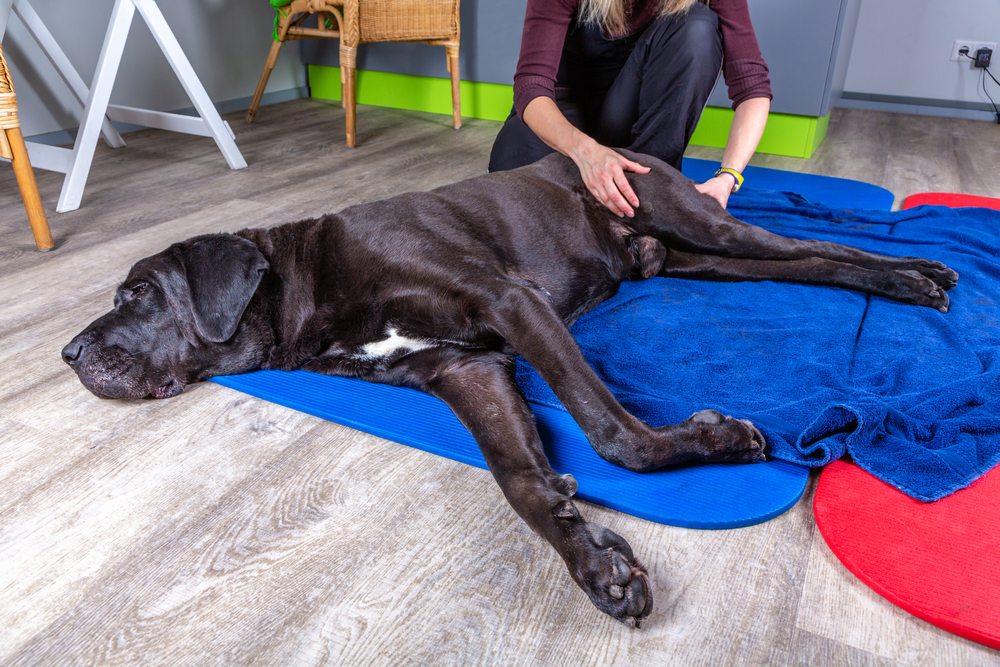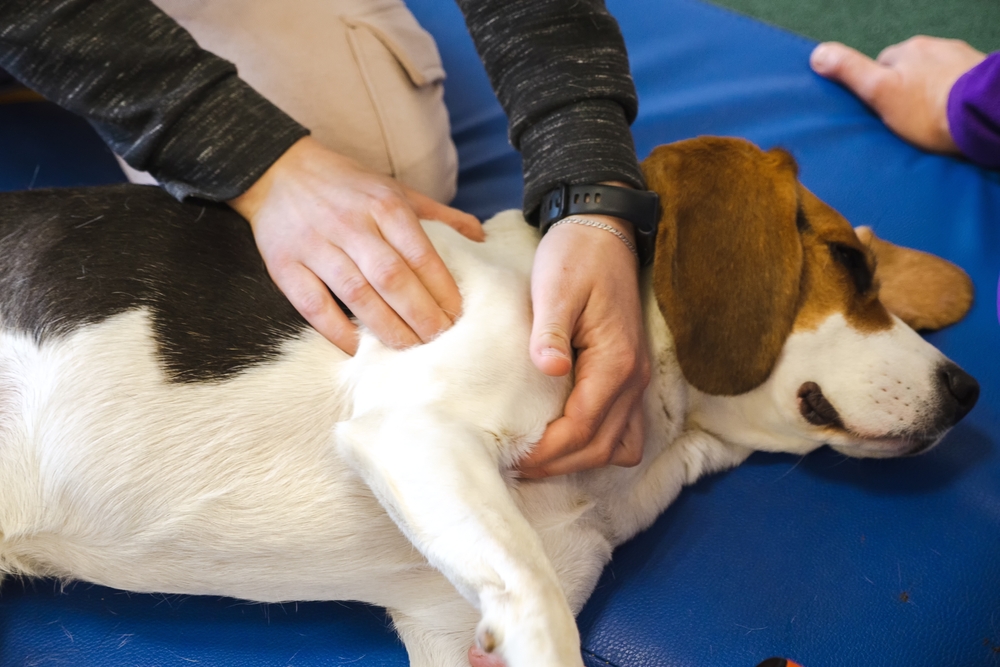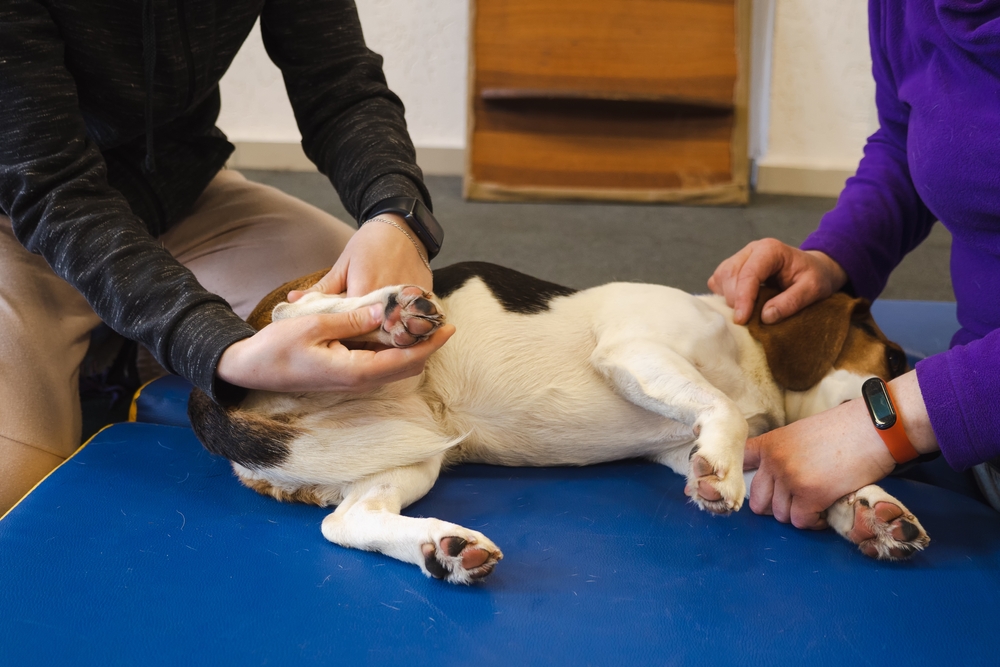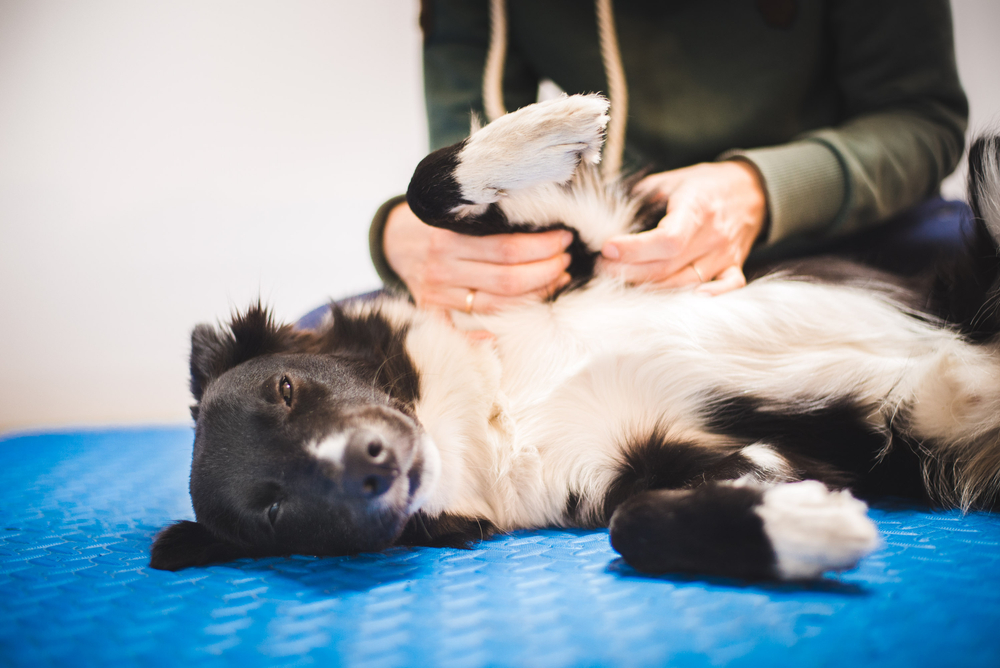Click to Skip Ahead
Physical therapy, or physical rehabilitation, is often used as the next step for healing and recovery for dogs with injuries or chronic issues. It’s usually recommended by veterinarians after a dog has undergone surgery or has received an official diagnosis.
Just like how physical therapy for humans comes in many forms, the types of physical therapy a dog will receive will depend on their physical condition. You can find all kinds of physical rehabilitation methods, including massages, therapeutic exercises, and hydrotherapy. We’ll go over all the important basics of physical therapy for dogs to help you determine if it’s right for your dog.

How Does It Work?
Physical therapy, or physical rehabilitation, is available to dogs recovering from all kinds of injuries, or with a chronic condition. It can help dogs increase their mobility after an injury, and some dogs may be able to regain a full range of motion after physical therapy.
After your dog receives initial treatment or surgery, your veterinarian may recommend physical therapy as a part of your dog’s recovery process. They’ll usually refer you to specific types of physical therapy that will effectively target the part of your dog’s body that has sustained an injury.
The number of physical therapy sessions for your dog will depend on the type of therapy and the severity of the injury. It’s common for dog owners to invest a lot of time into their dog’s physical therapy regimen, as some types of therapy may require at-home exercises in between appointments.

What Are the Different Types of Physical Therapy?
Physical therapy can look different depending on a dog’s injury, and many forms of physical therapy that are used for humans are available to dogs. One of the most common forms of physical therapy for dogs is physiotherapy and therapeutic exercise. Therapeutic exercises are designed to gradually strengthen the injured area and increase the range of motion. They’re often used for dogs recovering from tendon injuries or arthritis.
Low-impact water exercises and hydrotherapy are other common forms of physical therapy, and dogs may swim or walk on an underwater treadmill or swim in a specially designed swimming pool alongside a therapist. Being in water offers support for dogs and takes the weight off of their limbs. This allows them to move more easily and freely and can help them increase their range of motion and build muscle mass.
Thermotherapy involves applying heat to specific areas of the body for pain relief and therapeutic effect. Warming tissues is thought to improve mobility of muscles and tendons and may play a role in enhancing chronic wound healing.
Dogs can also receive massages to help decrease joint and muscle pain. Another form of physical therapy that’s available to dogs is acupuncture, which uses needles to target trigger points to improve tissue oxygenation and improves waste removal. Laser therapy is also becoming increasingly common to help wound healing and to assist with dental inflammation.
Where Is It Used?
Physical therapy is commonly used for dogs that are recovering and healing from an injury. Consistently going to physical therapy appointments and doing exercises at home may improve a dog’s prognosis or help them gain their full range of motion again.
Dogs with chronic pain, such as arthritis, can benefit from physical therapy. Receiving massages, swimming in water, and receiving heat therapy are all ways to help alleviate joint pain. Physical therapy can also help dogs who are overweight or obese and need to lose weight. Low-impact exercises can reduce the likelihood of experiencing joint pain and allow dogs to lose weight at a healthy rate.
If you’re interested in physical therapy for your dog, it’s best to speak with your veterinarian to determine if your dog will benefit from it. Your veterinarian can recommend appropriate types of physical therapy and may be able to refer you to an appropriate clinic. Never do physical therapy on your dog at home without consent and guidance from a professional. You can end up doing further damage and causing unnecessary pain for your dog.

Advantages of Physical Therapy for Dogs
Many types of physical therapy use natural methods to help dogs heal and feel better. You don’t have to worry about medication side effects and can see your dog’s condition improve gradually over time.
Physical therapy also provides guided exercises and treatments for dogs and provides a structure for their recovery. Since there’s more investment involved, owners are more likely to follow through on their dog’s treatment plan, giving their dog a better chance of achieving recovery or improvement.
Disadvantages of Physical Therapy for Dogs
One of the main disadvantages of physical therapy for dogs is the cost. One session can easily cost over $100, depending on what type of treatment your dog needs. You can also experience resistance from your dog. Some treatments require stretching sore or tender areas to improve their range of motion. This can be uncomfortable for dogs and can take a lot of coaxing and encouragement for dogs to engage in physical therapy.
Frequently Asked Questions (FAQ)
Does pet insurance cover physical therapy?
In some cases, pet insurance will cover physical therapy. Some pet insurance plans offer more extensive coverage and will reimburse physical therapy costs. However, physical therapy sessions are usually only approved if they’ve been recommended by your veterinarian to help your dog recover from an injury or to help with a chronic condition such as osteoarthritis.
How long are dog physical therapy sessions?
The length of a dog’s physical therapy session can vary, and sessions can last from 10 minutes to 1 hour. Your dog’s condition will significantly impact the length of the session. Some dogs may require shorter sessions with frequent breaks, while others will benefit from longer sessions.

How long does it take for dogs to recover with physical therapy?
Every dog’s treatment plan will look different. Some dogs may just need a couple of months of physical therapy to recover, and other dogs may need treatment for their entire lifetime. It really depends on what sort of condition your dog has and its severity. Therefore, it’s important to check in regularly with your veterinarian to determine if your dog is continuing to benefit from physical therapy or if it’s no longer necessary.
What’s the difference between physical therapy and physical rehabilitation?
Physical therapy and physical rehabilitation are often used interchangeably in the pet world. The main difference between the two terms is that physical rehabilitation is more of an umbrella term that encompasses all types of methods that help dogs meet their goals for physical functioning. Physical therapy falls under the umbrella of physical rehabilitation and is one specific method that helps dogs through their physical rehabilitation journey.

Conclusion
All kinds of dogs can benefit from physical therapy. Physical therapy doesn’t just help dogs recover and regain mobility after surgery. It can help alleviate pain for dogs with chronic health issues and help dogs lose excess weight at a healthy rate. Some forms of physical therapy are also covered by pet insurance. So, if you think your dog would benefit from physical therapy, make sure to speak with your veterinarian to determine if it’s a good course of action for your dog.
Featured Image Credit: Jus_Ol, Shutterstock











